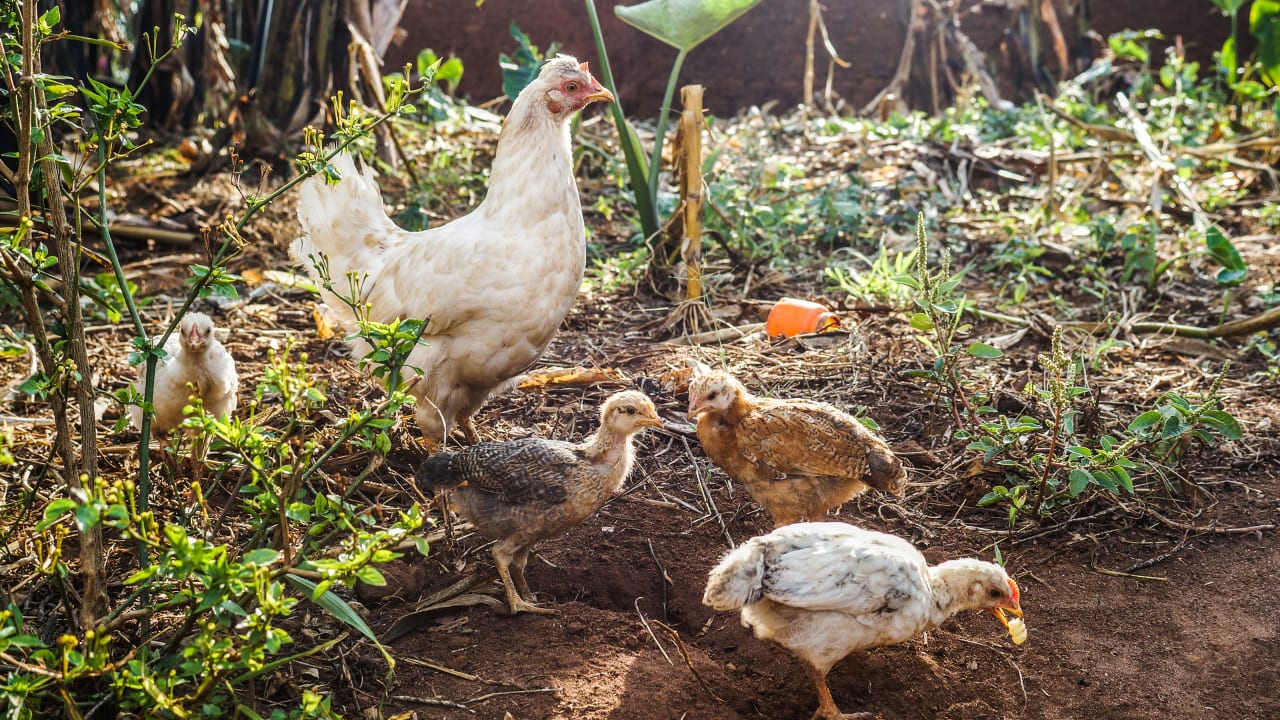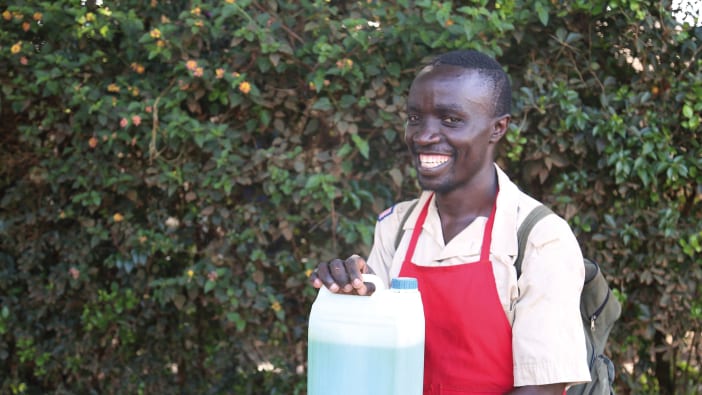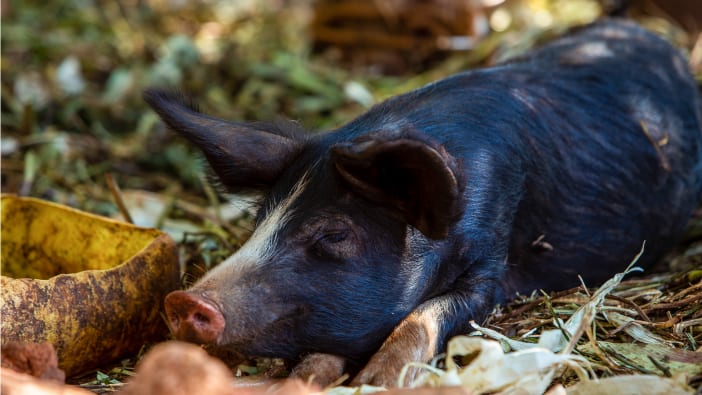Avian flu is an infectious viral illness that spreads among birds. It can affect chickens, ducks, geese, turkeys, guinea fowl, quail, pheasants, pigeons, 'song birds' and many types of wild birds. The birds may or may not show signs of the disease; if signs do appear, they begin two to five days after the bird catches the virus.
Avian flu is a dangerous disease because it can:
- kill all poultry on a farm
- spread rapidly to other farms and to the whole country
- sometimes be passed on to humans leading to sickness and even death.
Avian flu is similar to human flu and in rare cases it can affect humans. Human deaths caused by Avian flu have been reported in Azerbaijan, Bangladesh, Cambodia, China, Egypt, Indonesia, Iraq, Laos, Nigeria, Pakistan, Thailand, Turkey and Vietnam.
What are the signs?
Always suspect Avian flu when many birds die rapidly. They may not look sick before they die, or they may be a little depressed and/or have low food intake, ruffled feathers and fever. The clinical signs vary according to the strain of the infecting virus, the poultry species and age, as well as other diseases that may be present in the environment.
Signs include hens laying soft-shelled eggs, watery diarrhoea, excessive thirst, breathing difficulties, general weakness, swollen dark coloured combs and wattles, bleeding on unfeathered skin and looking sleepy with droopy heads.
How does Avian flu spread?
There are many ways in which Avian flu can spread including direct and indirect contact with infected birds: Direct contact can happen if infected birds are bought at market, received as gifts, or even carried to the farm by dogs.
Direct contact with infected wild birds can also spread the disease. Don’t forget, infected birds might not look sick! Ducks or hens that roam free and may interact with infected birds away from the farm are also at risk.
Indirect contact can happen if people visit from an infected farm or homestead. People can bring the disease on their clothes, shoes, boots, vehicles (eg wheels of a motorbike), carrier bags etc.
People who work in a live bird market, at a slaughterhouse or in a laboratory where the virus is present may also carry the disease. Infected manure can also bring disease with it, and ponds can become infected too.
Treatment
There is currently no treatment for Avian flu so we need to focus on preventing the disease from reaching poultry in the first place.
What should I do with sick birds?
- Never eat sick birds.
- Sick birds should be put in a fully closed building with no contact with any other animal. All dead birds and other contaminated objects (for instance: manure, eggs, blood, feathers, egg crates) must be destroyed properly as soon as possible on the same day by:
- Burning Place all the birds and objects in a recipient, add some petrol, and light a fire.
- Burying Dig a hole in the ground (far away from wells, ponds and other animals); put some quicklime at the bottom and on the edges of the hole; put all the birds and objects in the hole; cover with quicklime; then cover with earth.
- Warning: quicklime is highly caustic and will burn you if you touch it.
What should I do with healthy birds?
- Birds that look healthy can be kept alive as long as they are kept in a fully closed building, with no contact with any other animal.
- The veterinary authorities may suggest culling these birds immediately if the risk is too high or if laboratory tests show they have Avian flu.
- A farmer should never sell nor give away these birds or the eggs even though they may look healthy! If they do they put themselves and others at risk.
Adapted from Prevention and Control of Avian flu in small scale poultry: A guide for veterinary para-professionals in Cambodia, jointly published by the Food and Agriculture Organization and Agronomes et Vétérinaires Sans Frontières (Agronomists and Vets Without Borders).
How can I prevent Avian flu?
Basic principles of hygiene will help to protect your poultry from Avian flu. If there is no known outbreak in your area some simple principles will help to keep your birds safe:
- Keep the poultry in good condition because fit and healthy poultry with a good clean food and water supply and good housing are less likely to catch Avian flu.
- Keep the poultry in a protected environment – for example in a closed building, fenced park, or protected farmyard. Poultry that roam free are at higher risk.
- Control all entries to the farm










